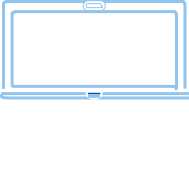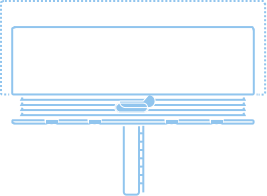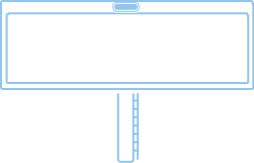Why Billboards Stick in Our Minds
A Picture in the Sky
You are driving down a quiet road. Suddenly, a massive screen flashes an image that you didn’t ask to see, yet you cannot stop looking at it. That is the secret charm of billboards. They do not wait for you to search or scroll. They come straight at your eyes and stay longer than you realize.
The Mind Loves What It Sees Fast
Our brains are built for speed. A human mind can process visuals in as little as 13 milliseconds. That is almost instant. Billboards use this trick by showing quick, bold images. The less you think, the faster the ad sinks in. That is why short slogans, bold pictures, and clear brand marks win on the road.
Why Big Always Wins Attention
Size matters when it comes to outdoor ads. Something large and bold feels important to the mind. A small flyer may be missed, but a giant sign towering above traffic almost demands to be seen. The mind links size with power, which is why billboards have a special authority that online ads often lack.
Colors That Whisper and Shout
Colors touch emotions faster than words. Bright yellow calls for cheer, red sparks urgency, and blue brings calm trust. That is why many brands pick billboard shades with care. A single color splash can do more than a whole block of text. Think of Coca-Cola’s red or McDonald’s golden yellow. You see them and feel them at once.
Faces and Feelings on a Flat Screen
We are wired to look at faces. A smiling child on a billboard can make us pause even in heavy traffic. The brain is designed to notice expressions. Sad eyes make us feel concern. Bright smiles make us trust. Outdoor ads often place human faces because emotions speak louder than sentences.
Memory Hooks We Can’t Escape
The best billboards do not just flash—they cling. How? By using mental hooks.A catchy line.A funny picture.A strange shape.Something that breaks the dull flow of traffic. Our memory is more likely to hold an odd or surprising image than a plain one. This is called the “stickiness effect.” When something feels unusual, the mind grabs it and stores it.
The Magic of Repetition

Seeing an ad once may not change your mind. But seeing it five times while driving to work almost surely will. Repetition builds trust without asking for it. The brain learns by repeating, and billboards use that very rule. That is why you may find yourself humming a brand’s jingle or recalling a product name without ever planning to.
When Place Meets Purpose
Outdoor ads do not just exist anywhere. They are placed with intent. A sports drink ad outside a stadium. A fast-food sign near a highway exit. A fashion billboard near a busy mall. The brain connects the product with the place. This makes the message stronger because the setting gives context.
Stories Without Words
The art of billboards is telling without talking. Too many words can make drivers turn away. But a single image of a dripping burger, a shiny car, or a joyful family says it all. The human brain loves pictures more than long text. When you see a story in one glance, it sticks like glue.
Numbers That Tell the Truth
Outdoor ads are not only about art. They also work in hard numbers. Research shows that 71% of people often look at roadside billboards while driving. That is not a small group—it is almost three out of four drivers. Another study found that 56% of travelers talk about an ad they saw on a billboard with friends later. This proves how strong their memory grip is.
Wrapping It All Up
Billboards are not just large posters on poles. They are psychological tools that slip into the mind. They use size, color, faces, and place to capture us without asking. They hook our memory with surprise and strengthen their hold with repetition.
Outdoor ads work because they do not fight against the way the human mind functions. Instead, they move with it—fast visuals, strong feelings, short stories, and endless reminders.
Next time you are stuck in traffic and catch yourself staring at a giant burger or a shiny car on a board above, know this: it is not an accident. It is psychology at work. And it is why billboards never really leave our minds.




















